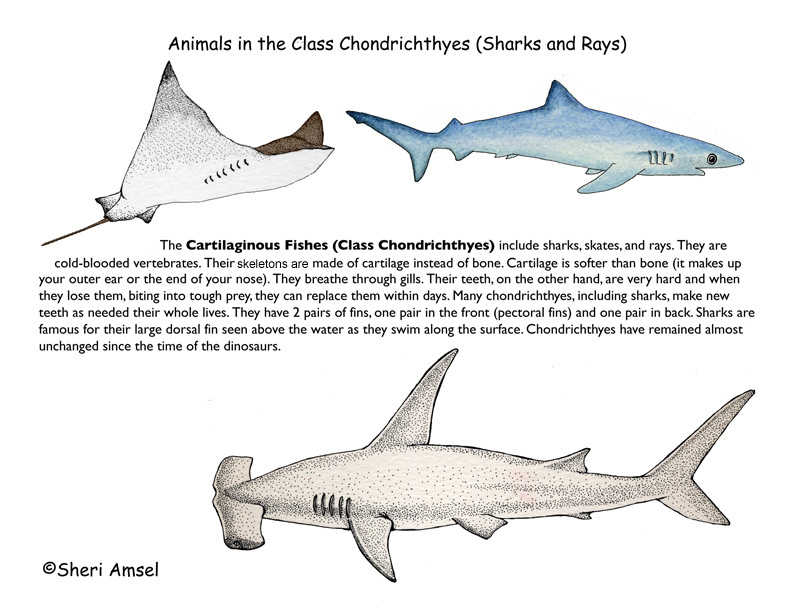

More About Sharks:
Classification of Sharks and Rays (Older Students)
Classification of Sharks and Rays (Younger Students)
Related Activity:
Blue Shark Drawing Lesson
Stingray Drawing Lesson
Shark Word Search
Sharks Hidden Picture and Naming
Related Visual Aid:
Shark at the Aquairum Movie
Related Testing and Assessment:
Sharks Multiple Choice Quiz
Sharks - Name Them
Phylum: Chordata
Class: Chondrichthyes
The Cartilaginous Fishes (Class Chondrichthyes) include sharks, skates, and rays.
They are cold-blooded vertebrates. Their skeletons are made of cartilage instead of bone. Cartilage is softer than bone (it makes up your outer ear or the end of your nose). They breathe through gills. Their teeth, on the other hand, are very hard and when they lose them, biting into tough prey, they can replace them within days. Many chondrichthyes, including sharks, make new teeth as needed throughout their whole lives. They have 2 pairs of fins, one pair in the front (pectoral fins) and one pair in back. Sharks are famous for their large dorsal fin seen above the water as they swim along the surface. Chondrichthyes have remained almost unchanged since the time of the dinosaurs.
When you research information you must cite the reference. Citing for websites is different from citing from books, magazines and periodicals. The style of citing shown here is from the MLA Style Citations (Modern Language Association).
When citing a WEBSITE the general format is as follows.
Author Last Name, First Name(s). "Title: Subtitle of Part of Web Page, if appropriate." Title: Subtitle: Section of Page if appropriate. Sponsoring/Publishing Agency, If Given. Additional significant descriptive information. Date of Electronic Publication or other Date, such as Last Updated. Day Month Year of access < URL >.
Amsel, Sheri. "About Sharks & Rays (Cartilaginous Fishes)" Exploring Nature Educational Resource ©2005-2024. April 4, 2024
< http://www.exploringnature.org/db/view/613 >
